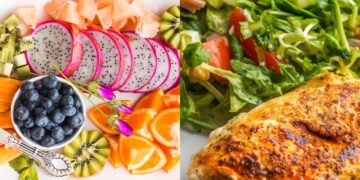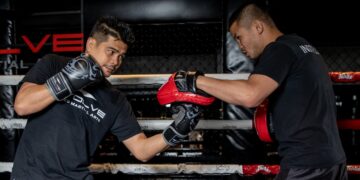
Whether you’re an athlete, bodybuilder, or someone dedicated to maintaining physical fitness, muscle recovery is a critical component of training. Without proper recovery, your muscles don’t have the opportunity to repair, rebuild, and strengthen after a workout. This can lead to fatigue, decreased performance, and a potential risk of injury. For anyone serious about optimizing their fitness and well-being, understanding the do’s and don’ts for muscle recovery is essential.
This article covers the key practices to avoid and those you should incorporate into your routine for optimal muscle recovery. By adhering to these guidelines, you’ll promote healing, enhance your performance, and prevent burnout.
Importance Of Building Muscle For General Health And Fitness
Building muscle is crucial for athletes or bodybuilders and essential for maintaining overall health and fitness. Strong muscles contribute to improved posture, enhanced mobility, and better balance, all of which become increasingly important as we age. Moreover, muscle mass plays a significant role in metabolism; the more muscle you have, the more calories your body burns at rest. Whether you are a full-time athlete or a weekend warrior, building muscle should be key to your overall training.
Now that we understand the importance of building muscle, here are the do’s and don’ts for optimal muscle recovery:
1) Don’t Overtrain
One of the most common mistakes people make when training is overdoing it. While it’s tempting to train hard every day, this is counterproductive to muscle recovery. Overtraining can lead to exhaustion, muscle soreness, and even injury. It is important to remember that muscles grow and repair during rest, not during the workout itself. By pushing your body too hard without giving it time to heal, you risk plateauing in your progress or causing long-term damage.
To avoid overtraining, incorporate rest days into your weekly routine. Taking off one or two days per week from intense training allows your muscles to recover properly. This doesn’t mean you have to be inactive on rest days. Active recovery activities such as light walking, swimming, or yoga can help keep your body moving while still giving your muscles the time they need to heal. In the long run, your performance will improve as you give your muscles the rest they need to grow and strengthen.
2) Don’t Consume A Lot Of Sugar Or Fast Food
What you eat has a significant impact on muscle recovery. Fast food and sugar-filled snacks might be convenient, but they can hinder the recovery process. Foods high in processed sugars and unhealthy fats promote inflammation in the body, which can slow down the healing process and increase muscle soreness after a workout. Additionally, these foods lack the essential nutrients required for proper muscle repair and growth.
Instead of reaching for fast food or sugary treats, focus on eating whole, nutrient-dense foods that support recovery. Nutrient-rich foods can help reduce inflammation and give your body the fuel it needs to repair damaged muscle fibers. By limiting processed foods, you’ll also maintain more consistent energy levels and reduce post-exercise fatigue, allowing your body to bounce back quicker after intense workouts.
3) Don’t Do A Lot Of Isolated Movements
Isolated movements, such as bicep curls or leg extensions, can be beneficial for targeting specific muscles, but over-relying on these exercises can limit your muscle recovery. Isolated movements focus on a single muscle group at a time, which can overwork particular muscles without giving the rest of your body a break. This can lead to imbalances, injuries, and a slower recovery process overall.
To maximize muscle recovery and overall fitness, it’s better to prioritize compound movements in your workout routine. Compound exercises, like squats, deadlifts, and bench presses, engage multiple muscle groups simultaneously. These exercises not only build strength across different areas of the body but also distribute the workload more evenly, reducing the strain on any one muscle group.
4) Do Eat An Anti-Inflammatory Diet
Diet plays a crucial role in muscle recovery, and one of the best dietary choices you can make is adopting an anti-inflammatory approach. Inflammation is a natural part of the healing process, but chronic inflammation, caused by poor diet and lifestyle choices, can slow down muscle repair. By eating foods rich in anti-inflammatory properties, you can reduce muscle soreness and promote faster recovery.
Include foods like fatty fish (salmon, mackerel), nuts, seeds, olive oil, and leafy greens in your diet, as these are rich in omega-3 fatty acids and antioxidants that fight inflammation. Spices like turmeric and ginger also have anti-inflammatory properties and can easily be added to your meals.
5) Do Get Plenty Of Protein
Protein is the building block of muscles, and getting enough of it is essential for optimal muscle recovery. When you exercise, especially during weightlifting or high-intensity workouts, your muscles undergo small tears that need to be repaired. Protein helps rebuild these muscle fibers, making them stronger and more resilient over time.
Amino acids, the compounds that make up proteins, play a key role in this repair process. Foods rich in protein, such as chicken, fish, eggs, beans, and Greek yogurt, provide your body with the necessary amino acids to repair and rebuild muscle tissue. For those training heavily, protein supplements like whey protein can be beneficial in ensuring you meet your daily protein intake. By prioritizing protein in your diet, you’ll enhance muscle repair and reduce soreness after intense exercise sessions.
6) Do Compound Movements
Compound movements, as mentioned earlier, should be the foundation of your workout routine. These exercises work multiple muscle groups simultaneously, promoting strength and stability throughout the body. Movements like squats, deadlifts, pull-ups, and push-ups not only build muscle but also improve coordination, balance, and overall athletic performance.
Incorporating compound exercises into your training program ensures that your body works as a unit, leading to more balanced muscle development and better recovery after workouts.
7) Do Eat More Fruits And Vegetables
Fruits and vegetables are packed with vitamins, minerals, and antioxidants, all of which are essential for muscle recovery. These nutrients help repair muscle tissue, reduce inflammation, and support the body’s overall recovery processes. For example, potassium, found in bananas and leafy greens, helps prevent muscle cramps and aids in hydration, while vitamin C from citrus fruits promotes collagen production, essential for tissue repair.
Including a variety of fruits and vegetables in your diet ensures that you’re getting a wide range of nutrients that support muscle recovery. Aim for a colorful plate of produce, including options like berries, leafy greens, bell peppers, tomatoes, and sweet potatoes. These foods provide antioxidants that combat oxidative stress, which can occur after intense physical activity.
Conclusion
Muscle recovery is an ongoing process that requires a balance of smart training, proper nutrition, and adequate rest. Avoiding common mistakes like the ones mentioned above will give your muscles the best chance to recover and grow stronger.
Remember that muscle recovery is just as important as your workouts. By taking care of your body through proper recovery practices, you’ll enhance your performance, and make steady progress toward your fitness goals.
You may also like:
14 Myths About Gaining Weight
Finding helpful information about gaining weight can be challenging since most fitness articles are geared toward people looking to lose weight. The small minority of people looking to gain weight often have to search the…
When working out, building significant muscle mass takes dedication, hard work, and time, so you want to do everything possible to maintain your new physique. The last thing you want is for your newly gained…
Using a foam roller before and after exercise improves athletic performance while preventing injury and fatigue. Foam rollers are also an excellent way to manage pain and soreness in different muscle groups. Keep going to…
When working out, steady-state training (SST) has gained much popularity recently, but it’s been around forever. Also known as low-intensity steady state (LISS) training or long slow distance (LSD) training, it is characterized by performing…
Nowadays, Keto and Low-Carb diets are getting lots of attention from fitness enthusiasts especially when they are working out. While the two may seem identical, they are different in structure. Simply put, Keto diets are…
The “Blue Zone Diet” has emerged as a popular concept in pursuing longevity and optimal health. Derived from regions around the world where people live the longest, healthiest lives, this diet focuses on natural, unprocessed…
When training Muay Thai, increasing your kicking power comes down to two aspects – your technique and your physical ability. Many Nak Muays focus heavily on technique, and rightfully so, but often forget to pay…
If you’re often at KINEX Mall for a good ol’ round of boxing, Muay Thai, Brazilian Jiu-Jitsu, or mixed martial arts session at Evolve MMA, you might be wondering whether there are lovely places to…
The underhook is an aspect part of grappling in BJJ. It is a hold that gives a strategic advantage by enabling strong control over an opponent and, at the same time, a good spot for…
The pawing jab won’t bring a fight to an end, but it can be an effective tool that sets up other punches that could leave your opponent unable to continue boxing. Used by legendary boxers…
Brazilian Jiu-Jitsu is a highly dynamic martial art that relies on positioning, movement, and technique. Many positions in BJJ are deemed must-learn to stay competitive on the mats. A good example of this is the…
Muay Thai is the national sport of Thailand and, until recently, the way a fight was scored was dictated by the elite Thai stadiums. It was a nuanced system, somewhat influenced by elements of chance…



































